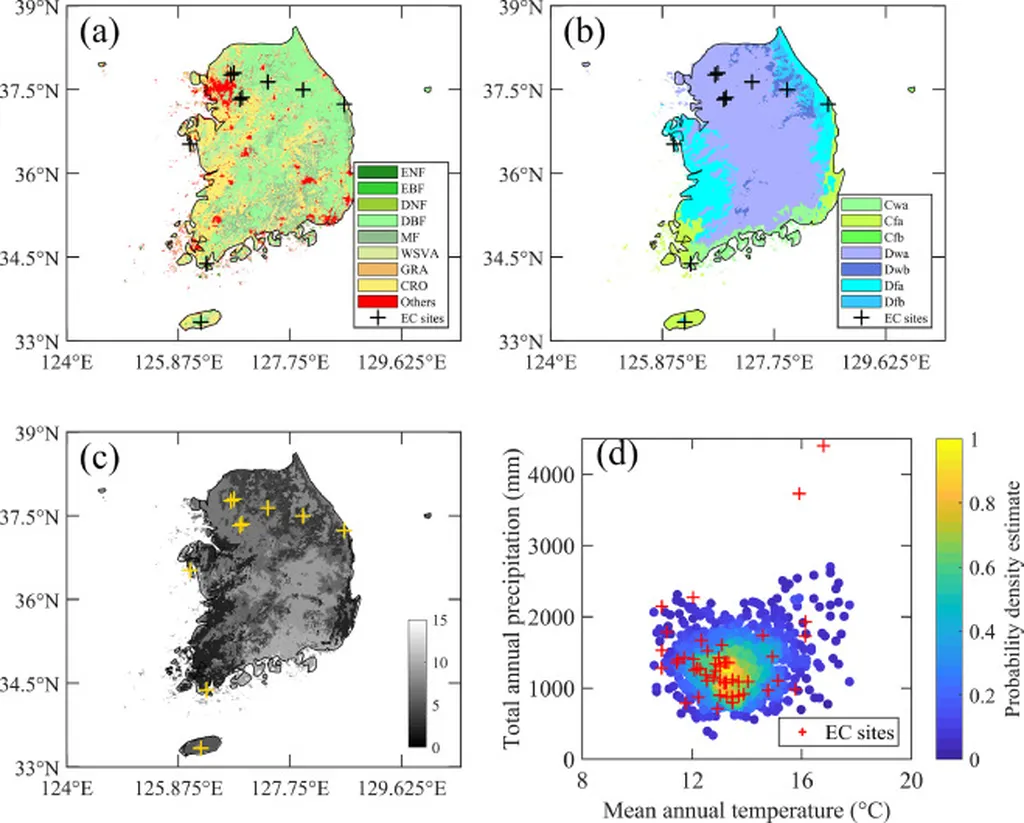In the heart of South Korea, a groundbreaking study is reshaping how we measure and manage carbon emissions in the agricultural sector. Led by Min-Ki Lee from the Department of Forest Resources at Kookmin University in Seoul, the research focuses on estimating the biomass of apple and citrus trees using advanced remote sensing technologies. The findings, published in the journal *Remote Sensing* (translated from Korean), offer promising insights that could significantly impact carbon accounting and greenhouse gas inventories.
The study, which involved destructively sampling trees of different ages, utilized terrestrial laser scanning (TLS) and drone-mounted RGB sensors to collect data on volume, height, and crown area. The results were striking. “The TLS-derived volume showed strong predictive power for biomass,” Lee explained, highlighting that the models achieved an R² value of 0.704 for apple trees and an impressive 0.865 for citrus trees. This level of accuracy is a game-changer for the agricultural industry, particularly for perennial fruit crops.
The implications for the energy sector are substantial. Accurate biomass estimation is crucial for improving carbon accounting, a process that has historically been challenging due to the lack of direct measurements. “Although limited in scale, this study provides empirical evidence to support the development of remote sensing-based biomass estimation methods,” Lee noted. This could lead to more precise national greenhouse gas inventories, refining emission and removal factors for perennial fruit crops.
The study also revealed that while aboveground biomass was reasonably estimated, belowground biomass showed very low predictability. This discrepancy underscores the need for further research and refinement of the models. However, the potential is undeniable. As remote sensing technologies continue to evolve, the ability to accurately measure biomass could revolutionize how we approach carbon accounting and sustainable agriculture.
The commercial impacts for the energy sector are equally significant. With more precise data, companies can better manage their carbon footprints, comply with regulations, and even explore new opportunities in carbon trading. The study’s findings could pave the way for more efficient and effective carbon management strategies, benefiting both the environment and the bottom line.
As the world grapples with the challenges of climate change, innovative solutions like those presented in this study are more important than ever. The research by Min-Ki Lee and his team offers a glimpse into a future where technology and agriculture converge to create a more sustainable world. The journey is just beginning, but the potential is immense, and the stakes are high. The energy sector, in particular, stands to gain significantly from these advancements, making this research a beacon of hope in the fight against climate change.

